No matter where you go in Michigan, from the most urban areas to the remote wildernesses, communities have come together to create botanical gardens that inspire and mesmerize.
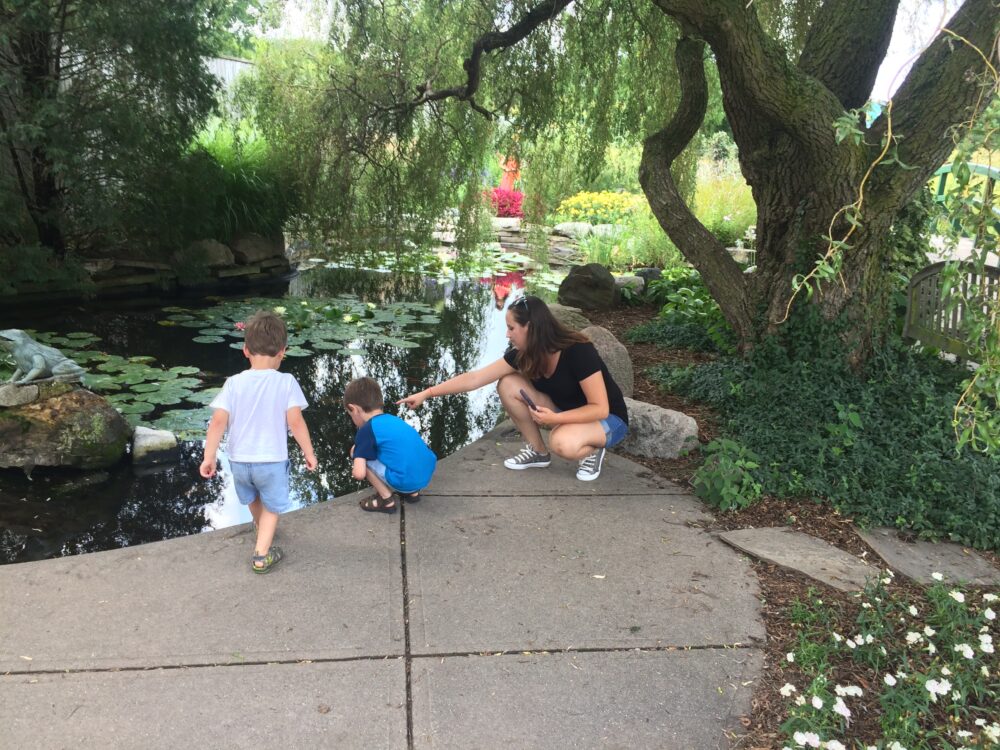
(Photo: Bridgette Redman)
Both large and small, Michigan’s botanical gardens feature sweeping walkways, peaceful
labyrinths and historical buildings. Many accommodate all four seasons with snowy walkways and sledding in the winter and beautiful arrays of flowers in the summer. Michigan’s arboretums put on a show of color in the fall and the spring’s tulips and daffodils offer promises of warmth after harsh winters. Some botanical gardens focus on a single type of plant while others pursue diversity with both native and international offerings.
MSU Gardens
As the nation’s oldest land-grant agricultural college, Michigan State University is filled with botanical gardens that stretch out for miles. Best known is the Beal Botanical Garden, the country’s oldest continually running botanical garden that covers five acres and is free to the public. However, campus is filled with specialty gardens. The 4-H Children’s Garden provides 56 themed, interactive garden experiences from frog ponds to mazes to treehouses to pizza gardens. Then there are the Radiology Healing Gardens, the MSU Rain Gardens, the W.K. Kellogg Bird Sanctuary and the Landscape Arboretum which includes ornamental grass display gardens, a Japanese garden, a fruit collection, a conifer garden and a bee, butterfly and hummingbird garden among others.
Spread throughout the Michigan State University Campus in East Lansing, Augusta, Novi
Frederik Meijer Gardens and Sculpture Park
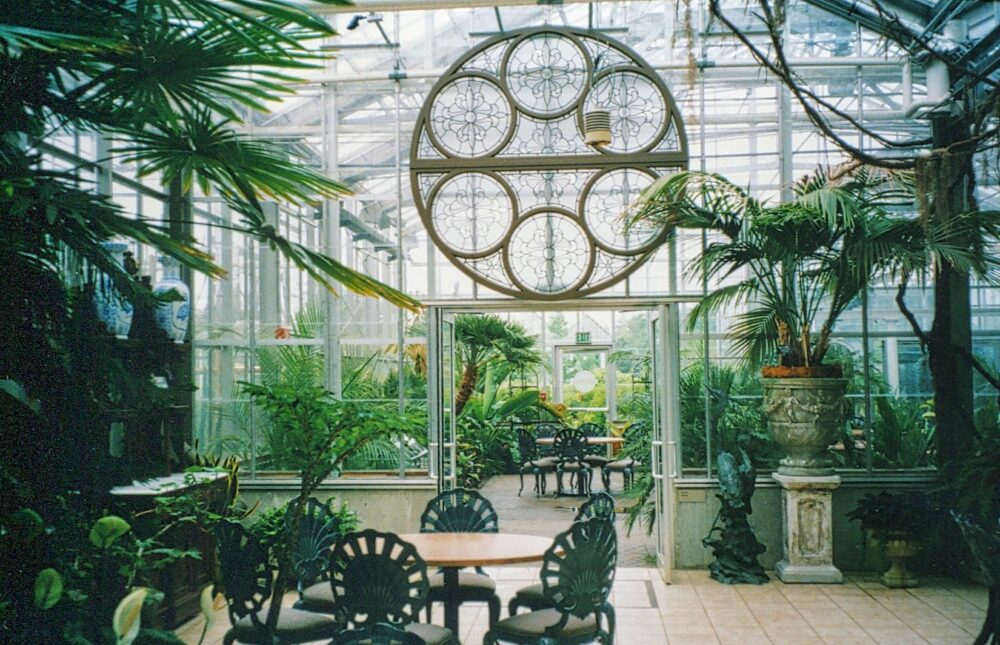
(Photo: Wikipedia)
One of Michigan’s newer botanical gardens, the 158-acre Frederik Meijer Gardens and Sculpture Park has quickly become one of the most popular, attracting tens of millions of visitors since it opened in 1995. It contains the state’s largest tropical conservatory, five indoor theme parks and nearly 300 sculptures of all sizes including pieces from Rodin and Degas. Other popular features include the Japanese garden, the children’s garden, the farm garden and an annual two-month butterfly exhibition that is the largest in the nation. The Tropical Conservatory is a five-story, 15,000 square foot facility with a waterfall and plants from around the world.
1000 E. Beltline NE, Grand Rapids
Windmill Island Gardens
There is a short window of time each year when Holland’s Windmill Island Gardens are in their full glory with 150,000 tulips in bloom. However, events year-round celebrate the city’s Dutch heritage. The central feature of the island is the windmill ‘de Zwaan,’ the last working windmill that was allowed to leave the Netherlands in 1964. Surrounding it are 36 acres of gardens and historical exhibits. Replica structures include a working street organ, an antique kids’ carousel with hand-painted animals, a wayside inn, fisherman’s houses and an orphanage. The tulip grove is carved from old-growth oak trees.
270 S. River Avenue, Holland
Belle Isle Conservatory
Belle Isle is a testament to nature thriving even in urban areas. A 982-acre island park in the
Detroit River in downtown Detroit, the island is home to the Belle Isle Aquarium, Ann Scripps Whitcomb Conservatory, Dossin Great Lakes Museum, Belle Isle Nature Center and the James Scott Memorial Fountain. The Conservatory is the oldest continually running conservatory in the U.S., built in 1902. It was modeled on London’s Crystal Palace and Kew Gardens. The 85-foot high central dome houses palm trees and tropical plants. Anna Scripps Whitcomb donated her 600-orchid collection to the conservatory, many of which were saved from Britain during World War II.
4 Inselruhe Ave., Detroit
Dow Gardens
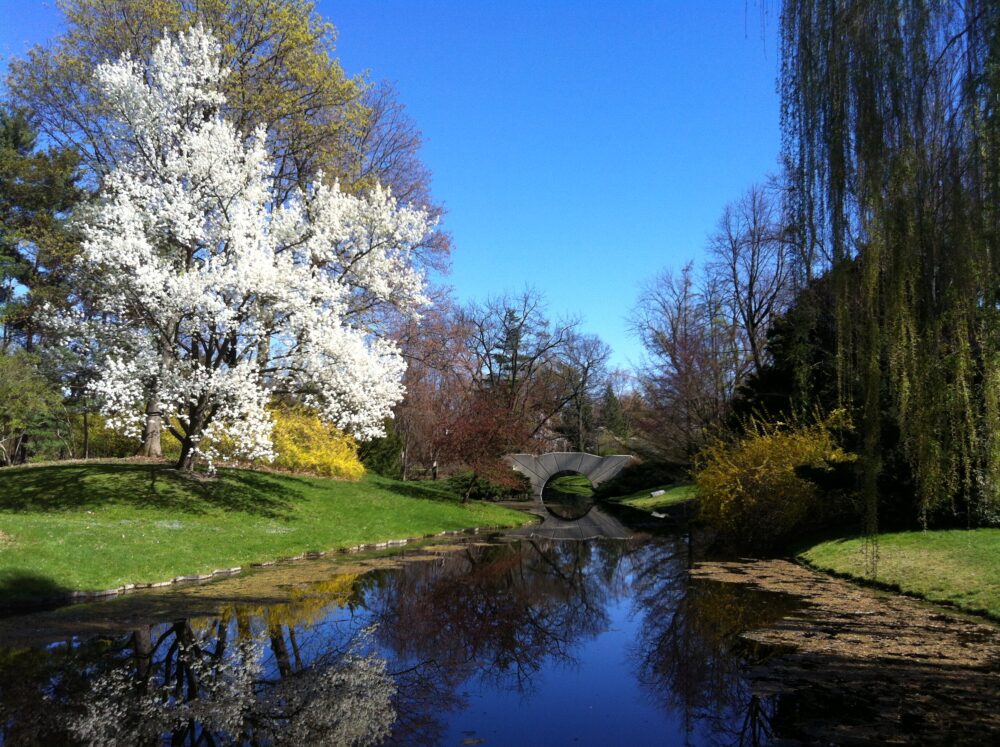
(Photo: Wikipedia)
A garden designed to be as beautiful when covered in snow as it is when flowers are in full
bloom, the Dow Gardens has 110 acres of gardens filled with annuals, perennials, towering trees and bridges. It has the nation’s longest canopy walk at 1,400 linear feet. Forty feet above the ground, it is handicap accessible. It features a large cargo net that visitors can travel across and a viewing platform with a glass floor. The gardens also feature a children’s garden, exploration garden, playground, orchard and The Pines of Dow Garden, which is a national historic landmark.
1809 Eastman Ave., Midland
Matthaei Botanical Gardens and Nichols Arboretum
Ann Arbor’s University of Michigan is home to 700 acres of gardens, greenhouses and natural preserves. The gardens contain three miles of trails that wend through such specialty areas as the Bonsai and Penjing Garden, Great Lakes Gardens, Gaffield Children’s Garden, Alexandra Hicks Herb Knot Garden, Gateway Garden of New World Plants, Perennial Garden, Helen V. Smith Woodland Wildflower Garden, Medicinal Garden, Marie Azary Rock Gardena, Urban Pocket Garden and Sitting Garden. There is also a labyrinth and a demonstration prairie. The Arboretum is filled with trails, gardens and is home to summer Shakespeare performances. In the winter, students head there with cafeteria trays to go sledding.
1800 N. Dixboro Rd., Ann Arbor
The Botanic Garden at Historic Barns Park
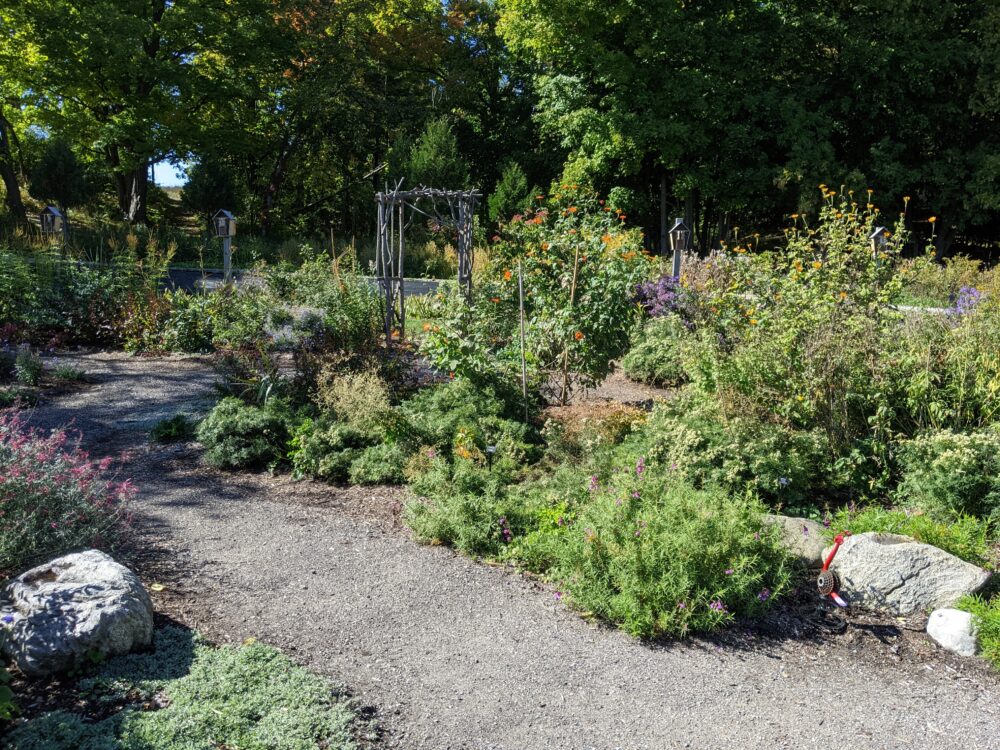
(Photo: Jeremy Thompson via Flickr / CC BY 2.0)
Heading north, the nation’s largest labyrinth can be found in a 25-acre Traverse City botanical garden. Designed with an emphasis on northwest Michigan native plants, it is a wildlife habitat as well as a garden. In addition to the stone labyrinth, there are hiking trails, nine gardens and rotating shows of regional artists. The park gets its name from the two large historic barns that were once a part of the working farm that fed patients and employees of the former Traverse City State Hospital. It is devoted to “preserving the past and planting the future.”
1490 Red Drive, Traverse City, MI 49684
Grand Hotel Secret Garden
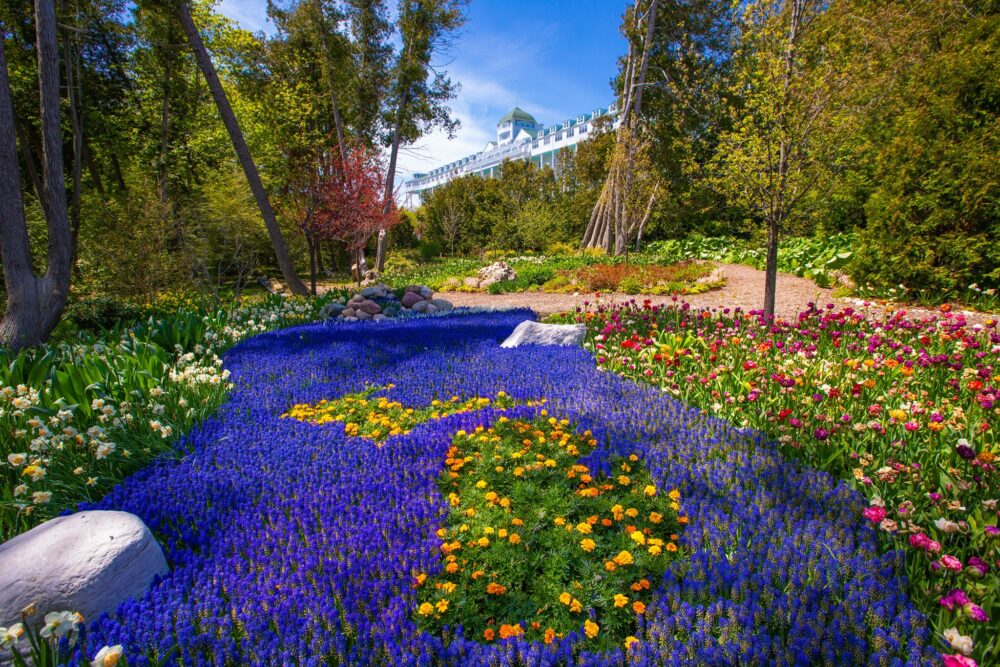
(Photo: Grand Hotel)
While most botanical gardens on this list are large affairs, this Mackinac Island garden is, as its name suggests, a well-kept secret. Even many regulars to the motor-free island have never seen it. The iconic Grand Hotel is home to many gardens filled with century-old lilacs, white cedar and maple trees. The Secret Garden is hidden in the middle of the gardens and features one section filled with perennials and another dedicated to spring flower bulb displays that are replanted every year with ever-new designs and surprises. A couple paths run through the garden, but many people turn to hotel staff to find this hidden gem.
286 Grand Avenue, Mackinac Island
The Monet Garden
This tiny garden was designed to provide charm and warmth to the downtown city streets of Muskegon. Modeled after the Monet Garden in Giverny, France, it is a pocket garden that
transformed a vacant city lot. With a lily-pad covered, goldfish-filled pond, the garden has
become a favorite for painters, weddings, lunches and school photos. The park contains benches and is illuminated after dark so visitors can enjoy it 24 hours a day.
470 W. Clay Ave., Muskegon
Leila Arboretum
In 1922, the widow of a cereal magnate donated 72 acres of former country club land to the city of Battle Creek to be used as an arboretum. Then the Depression hit, halting plans for more than 50 years. In 1982, volunteers took over and created what is now a public arboretum and garden. It is home to a one-mile trail, a peace labyrinth, the Kaleidoscope Garden, a community vegetable garden, a fantasy forest, the Fragrant Hill Pavilion, a heated greenhouse and many pieces of public art. The Arboretum also offers many classes for those who want to learn more about gardening.
928 W. Michigan Ave., Battle Creek